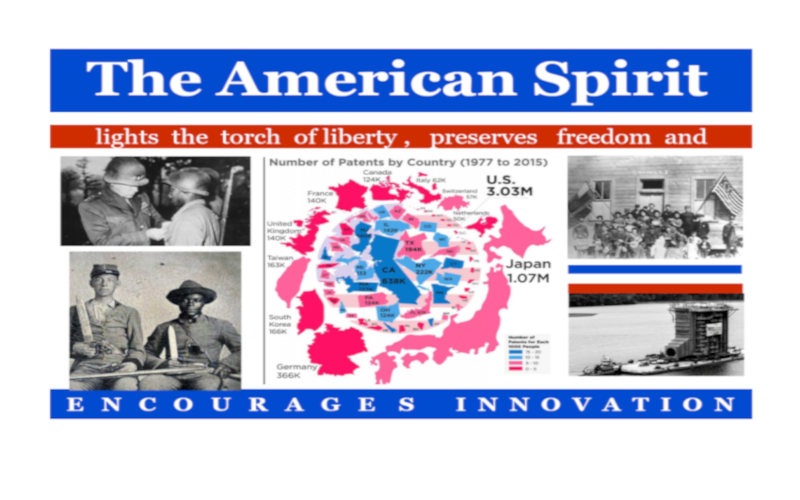
American Quality
“If there is any one secret of success, it lies in the ability to get to other person's point of view and see things from that person's angle as well as from your own.”
Ford's idea of "putting the shoe on the other foot", putting yourself in another's place and "do not do unto others as you would rather not have be done unto yourself" . . . this idea encapsulates a basic principle in quality, the customer.
How did The Ford Motor Company propel innovation while maintaining quality? Acronyms?
Well, no . . . but since you mention it. When it comes to quality, Ford has some of it's very own acronyms in "Ford Speak". Here are a few:
QOS or Quality Operating System is asystematic, disciplined approach that used standardized tools and practices to manage business and achieve ever increasing levels of customer satisfaction.
Quality Process System QPS Combination Sheet
A job aid used by team members establishing and maintaining a Quality Process System. The form graphically represents the operation time, which aids work-sequence analysis and the elimination of wasted time.
QR or Quality Reject - A document used by a manufacturing plant to reject incoming material. Actual form title is "Incoming Material Reject Report", document #291A.
QRT or Quality Responsible Team - a cross functional organizational team responsible for the quality of a particular vehicle system.
QSC or Quality Strategy Committee - A committee headed by L. R. Ross comprised of NAAO General Managers/Vice Presidents which meet monthly to address issues affecting the quality of NAAO products.
Many of the Quality Assurance principles came from the high industrial production of two World Wars. The volume of parts and production necessitated a streamlined process. While this could have been accomplished without such modes of destruction, these are historical events and they impacted the world of quality assurance and quality control. Ford played a great part of both historical events and the quality assurance principles that governments demanded for offensive and defensive mechanical engineering designs propelled Ford into methods that were revolutionary.
All of the above ideas and principles enveloped in the acronyms above, they are all set to achieve as close as possible PERFECTION for the customer, to meet the customer and end user's specifications and expectations and achieve a reliable expectation for the FORD brand.
Ford did not start out this way. In fact, Ford’s first company – Detroit Automobile Company – went out of business in 1901 “amid customer complaints of high prices and low quality”
In fact although utilizing the principles of the Taylor quality system, it was not until trial and error, with the development of the Model T, that Ford's quality assurance began to properly develop.
On August 15, 1899, in Detroit, Michigan, Henry Ford resigned his position as chief engineer at the Edison Illuminating Company's main plant in order to concentrate on automobile production.
The impact of Henry Ford's decision, to go independent, would change the course of history as we know it.
The decision wasn't impulsive, Henry had been working on his invention while doing all his other duties. In early of 1894, Henry Ford was 31 years old and he worked as a mechanic in The Edison Illuminating Company. And thoroughly understand the intricacies of steam engines and explosion, and in 1893 built a single cylinder engine with the parts at hand and a large flywheel removed from a lathe. On Christmas Eve of that year it was run on the kitchen sink of her home in Detroit.
After the success in 1894 Ford decided to produce a motor vehicle with a more elaborate. He was installed in a brick shed next to his house (still preserved) began producing a horizontal twin-cylinder engine for which supply side, distribution and drew on his mechanical intuition, using a large waste of wit, both for distribution and transmission power.
In spring, 1896 after two years Quadricycle was finished. It was four o'clock on the morning of June 4 when Ford pulled his car and made a tour of Detroit. Later he made a trip to his father's farm located 40 km. Henry made two more, which only keeps one in the Ford museum in Detroit You could say that the Quadricycle was the starter of the Ford Motor Company.
The aftermath of the war effort, with Japan vowing to not have offensive weapons brought the might of the Japanese mind also into the Quality Process.
Work of Kanzler and Ford In developing JIT production methods.
(citation;https://www.shmula.com/fords-contribution-to-just-in-time/371/)
Many of the ideas developed by Henry Ford and his assistants are worth reviewing for their possible application today. One of these ideas, JIT production methods, is the idea discussed in this article. Other significant ideas at the Ford Motor Company include production of a relatively inexpensive car for the masses and the shipment of components (rather than finished automobiles) to distant assembly plants located near the consumer. In the case of JIT production methods, Ernest Kanzler accomplished the early stages of this approach at the Ford tractor plant. Later, Ford with the help of Kanzler, implemented JIT production methods on a larger scale at the Ford Motor Company in 1920 and 1921. Prior to discussing this innovation by Kanzler and Ford, it is useful to describe how they interacted and got along with each other.
Ernest Kanzler had a close relationship with Henry Ford. In fact, they were indirectly related. Kanzler’s wife Josephine and Eleanor Ford (wife of Henry Ford’s son Edsel) were sisters. Further, “Ernest and Josephine Kanzler lived a few doors away from the Edsel Fords on Iroquois Avenue” (Lacey, 1986, p. 281). Ernest Kanzler rose from humble origins and, as a young lawyer, was hired by one of Detroit’s major law firms, Stevenson, Carpenter, Butzel and Backus. In 1914, when Ernest Kanzler became acquainted with Henry Ford, Kanzler’s law firm represented two clients in their suits against Henry Ford. As luck would have it, Kanzler was assigned to conduct research for both of these cases. At the time Ford first met Kanzler, “he used to twit the young lawyer, when Ernest and Josephine came over to Fair Lane with the Edsel Fords, by discussing the suits in great detail” (Lacey, 1986, p. 281). Consequently, the embarrassed young attorney would plead with Henry Ford not to discuss the cases. To this Ford responded, “Why do you want to be a lawyer, anyway? They’re parasites. Come to Highland Park and I’ll give you a job” (Lacey, 1986, p. 281). Initially resisting this offer, Kanzler accepted when “Henry Ford incorporated his new tractor company, Henry Ford and Son, in August 1916” (Lacey, 1986, p. 281). Joining at the beginning of this new company, Kanzler played a major role in producing the first Fordson tractors before the conclusion of the Great War. Subsequently, in the postwar period, Kanzler along with his friend Edsel Ford helped run the company.
Much of Henry Ford’s success can be attributed to his production methods and his decision to sell cars at a price so low that even his assembly-line workers could afford to buy one. These low prices caused serious difficulties for his competitors. For instance, in 1920, “the stock of the General Motors Corporation began to wilt severely under the onslaught of the Ford price cuts” (Lacey, 1986, p. 285).
Near the end of 1920, a nation-wide recession was nearing crash proportions and Ford sales fell along with their competitors. “Ford was taking a loss of 20 dollars or so on each car” (Lacey, 1986, p. 285). As the crisis continued, Henry Ford faced the real possibility of bankruptcy:
[With] the prospect of bankruptcy in the winter of 1920, [Henry Ford] found ready targets for his aggression – particularly in the bureaucracy of his company, which he had always viewed with a jaundiced eye. His office staff was cut from 1,074 to 528, the telegraph office eliminated, the tax and controller’s departments merged with auditing. The desks, typewriters, filing cabinets, and paraphernalia of the surplus staff were taken out and sold, along with 60 percent of the telephone extensions – “only a comparatively few men in any organization need telephones,” said Henry (Lacey, 1986, pp. 284-5).
Henry Ford was determined to regain solvency by improving overall operations rather than seek help from Wall Street. Kanzler played a major role in the effort to improve efficiency from within the organization. In fact, Kanzler’s approach is quite similar to today’s JIT methods of production. In this regard, Kanzler noticed that during the Great War, excessive supplies were brought into the Fordson Tractor Plant prior to production. He found that these excess supplies tied up valuable plant space and millions of dollars.
To remedy this, Kanzler reorganized inventory schedules so that raw materials and pans were bought only when needed and that the freight cars used for delivery of these pans were used immediately to transport finished Fordson tractors to dealers:
After Henry Ford had acquired full control of his car company in 1919, he brought Kanzler over to work the same miracle at Highland Park (Lacey, 1986, p. 285).
It proved the saving of the situation in the winter of 1920, for Highland Park was stocked to the walls with spare parts. The inventory was valued by one estimate at no less than $88 million, and from this huge stockpile Kanzler carved out packages of components which were despatched as compulsory additions to every shipment of new cars, these shipments themselves being systematically increased by the factory to use up the large stocks of vehicles unsold because of the recession (Lacey, 1986, p. 285).
Kanzler’s JIT method took an unusual approach in delivering cars to dealers during the winter of 1920-1921. Approximately 6,000 Ford dealers received more cars than they ordered. Along with these extra cars was a delivery of an excessive amount of spare parts. In those days, a Ford dealer’s franchise required dealers to pay in full upon delivery for all cars and spare parts received. While a few dealers refused to pay for cars and parts they did not order or could not sell, most of the dealers borrowed money locally and paid in full. Obviously they wanted to retain their Ford dealer’s franchise. As a result, the Ford Motor Company reduced their excessive inventory of cars and spare parts and subsequently improved their critical cashflow position:
Back in Highland Park, meanwhile, the company had unilaterally changed its own schedule of payments to suppliers from 60 to 90 days, and had also used the generally depressed state of the market to cut its offer prices on raw materials and ready-made parts to the bone. By paying only a skeleton staff of executives and despatchers at Highland Park through the month of January, costs were reduced still further, and by the spring of 1921 Henry Ford could boast that he had paid off all his debts. He had an additional cash surplus in hand of no less than $20 million. Best of all, he had achieved this miracle without borrowing a penny from the bank. As they heard the news, 6,000 or so people around the country knew that they had done the borrowing for him (Lacey, 1986, p. 286).
At the conclusion of the 1920-1921 postwar slump, the Ford Motor Company was leaner and more competitive. For example, during the economically favorable months of 1919, Ford employed 15 workers per completed car per day. When the Highland Park Plant reopened in February 1921 after their downsizing, nine workers were employed per completed car per day. This improvement was accomplished by rehiring fewer workers and speeding up the line. Henry Ford pointed to his increased productivity as one more argument against the bankers. “If we had borrowed,” he said, “we should not have been under the necessity of finding methods to cheapen production” (Lacey, 1986, p. 286).
Ernest Kanzler and Henry Ford made a substantial contribution to what we refer to today as JIT production methods. While credit can be given to Kanzler for the approaches he developed during the war at the Fordson Plant, Henry Ford’s role should not be minimized. Ford’s emphasis on a wider systems approach developed naturally from his focus on the assembly-line. In fact, the concept of JIT evolves naturally when the idea of an assembly-line is expanded to include a further examination “up-stream” and “down-stream” of inputs and outputs.
Closing Remarks: Henry Ford, Just in Time
While JIT methods of production were popularized by the excellent productivity of Japanese industry, this approach had its origin earlier in the USA. Actually, Ernest Kanzler developed an early version of this approach at the Fordson Tractor Plant during the Great War. Then, due to difficult economic conditions during 1920 and 1921, Henry Ford, with the help of Kanzler, employed it on a larger scale throughout the Ford Motor Company. Although these efforts started with the observations and practical work of Kanzler at Fordson Tractor during the Great War, the overall credit for its wide application at the Ford Motor Company during 1920 and 1921 rests with Henry Ford. While Ford, and those close to him at work, were fully aware of Taylor’s scientific management it clearly appears that the innovations at the Ford Motor Company were based on their own ideas and need to respond to specific requirements in automobile manufacturing.
The JIT approach attempts to reduce costs and improve workflow by carefully scheduling material to arrive where needed at the proper time. Consequently, costs of inventories can be substantially reduced and the use of space can be conserved. In some cases this approach can contribute to an improved quality of the product. Today’s managers and those interested in efficiency in the workplace would be well advised to review the suggestions of earlier industrialists and their assistants such as Henry Ford and Ernest Kanzler. Many of their ideas are of practical value today.













